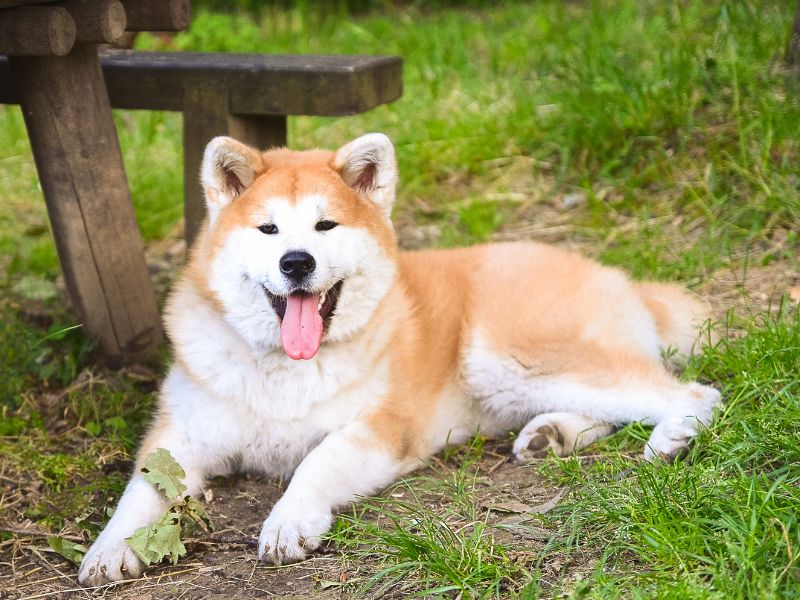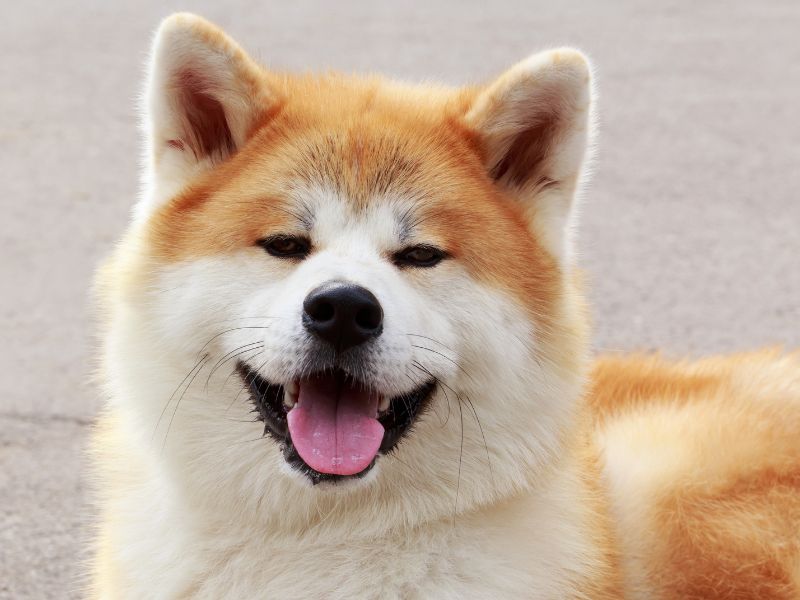Are you fascinated by loyal and protective dogs with a striking appearance? Look no further than the Akita. This majestic breed, originating from Japan, has captured the hearts of dog enthusiasts worldwide. Known for their powerful build, thick double coat, and distinctive curled tail, Akitas are a breed like no other. But their beauty is not the only thing that sets them apart. Akitas are renowned for their unwavering loyalty, intelligence, and strong protective instinct, making them excellent family companions and guardians. In this comprehensive guide, we will delve into everything you need to know about Akitas, from their history and temperament to their care and training requirements. Whether you are considering bringing an Akita into your home or simply want to learn more about this fascinating breed, this article will provide you with all the essential information to become an Akita expert. So, let’s embark on this journey and discover the wonders of the Akita together.
History And Origin of The Akita
The history of the Akita dates back to ancient Japan, where they were originally bred as hunting dogs. These dogs were highly prized for their strength, agility, and fierce loyalty. The Akita’s ancestors can be traced back to the Matagi dog, a breed that was used for hunting large game such as bears. Over time, the Akita evolved into a versatile working breed and became known for their guarding and protection abilities. However, their popularity soared when Hachiko, a loyal Akita, became a symbol of loyalty in Japan after faithfully waiting for his deceased owner at a train station every day for nearly ten years.
The Akita breed faced a decline during World War II, where many Akitas were killed due to food shortages and the government’s demand for fur. However, a group of dedicated enthusiasts saved the breed from extinction by carefully selecting and breeding the remaining Akitas. Today, Akitas are highly regarded as a national treasure in Japan and have gained immense popularity around the world.
Physical Characteristics of The Akita
The Akita is a large and powerful dog with a distinctive appearance. They have a solid and muscular build, giving them an imposing presence. Akitas have a broad head with small, triangular-shaped eyes that exude intelligence and alertness. Their ears are thick and triangular, and they carry them erect. One of the most striking features of the Akita is their thick double coat, which consists of a coarse outer layer and a soft undercoat. This coat provides excellent protection against harsh weather conditions.
Akitas come in various colors, including white, brindle, red, and sesame. The breed’s curled tail adds to their overall grace and elegance. Male Akitas typically stand between 26 to 28 inches at the shoulder and weigh around 100 to 130 pounds, while females are slightly smaller, measuring 24 to 26 inches and weighing 70 to 100 pounds. Overall, the Akita’s physical characteristics make them an impressive and regal breed.
Akita Quick Facts:
- Breed Size: approximately 24 – 28 inches
- Breed Weight: approximately 70 – 130 pounds
- Shedding Level: 3 in a scale of 5
- Life Expectancy: around 10 – 14 years

Temperament And Personality Traits of The Akita
While Akitas may possess a powerful and intimidating appearance, their temperament is a mix of strength, loyalty, and affection. Akitas are known for their unwavering loyalty to their families, and they will go to great lengths to protect their loved ones. This protective instinct makes them excellent guard dogs, as they are always vigilant and ready to defend their territory.
Despite their strong protective nature, Akitas can also be gentle and affectionate companions. They form deep bonds with their families and are particularly fond of children. However, Akitas are independent dogs and can be aloof with strangers. Early socialization is crucial to ensure that they are comfortable around new people and animals.
Training And Socialization of The Akita
Training an Akita requires a firm and consistent approach. Akitas are intelligent dogs, but they can also be stubborn at times. It is important to establish yourself as the pack leader and use positive reinforcement techniques to motivate and reward your Akita. Early training and socialization are key to ensure that your Akita grows up to be a well-mannered and well-adjusted dog.
Socializing your Akita from a young age is essential to expose them to different people, animals, and environments. This helps them develop good manners and prevents any potential behavioral issues. Regular obedience training sessions, combined with positive reinforcement, will help channel their intelligence and energy into productive activities. With patience, consistency, and positive reinforcement, you can shape your Akita into a well-behaved and obedient companion.
Common Health Issues in Akitas
Like all dog breeds, Akitas are prone to certain health issues. It is important to be aware of these potential problems and take proactive measures to ensure your Akita’s well-being. Some common health issues in Akitas include hip dysplasia, progressive retinal atrophy (PRA), hypothyroidism, and autoimmune disorders.
Regular veterinary check-ups, a balanced diet, and regular exercise are crucial to keeping your Akita in good health. Providing them with a nutritious diet, regular exercise, and mental stimulation will go a long way in preventing obesity and maintaining their overall well-being. Additionally, early detection and treatment of any health issues can significantly improve your Akita’s quality of life.
Grooming And Care for Your Akita
Despite their thick double coat, Akitas have minimal grooming needs. Their coat requires regular brushing to remove loose hair and prevent matting. Akitas typically shed heavily twice a year, during which more frequent brushing is necessary to manage the shedding. Bathing should be done as needed, using a gentle dog shampoo to maintain the natural oils in their coat.
Regular dental care is essential to prevent dental problems such as tartar buildup and gum disease. Brushing your Akita’s teeth regularly and providing them with appropriate chew toys can help maintain their dental health. Additionally, trimming their nails regularly and cleaning their ears to prevent infections are important aspects of Akita care.

See Also: Beautiful and Cute Japanese Dog Breeds
And: How Much Time Do I Need to Commit When Owning a Dog?
Akita As a Family Pet
Akitas can make wonderful family pets when properly trained and socialized. Their loyalty and protective nature make them excellent companions for families with children. However, due to their large size and strong guarding instincts, it is important to supervise interactions between Akitas and young children to ensure safety.
Akitas thrive in homes where they receive ample attention, exercise, and mental stimulation. They require daily exercise to keep them physically and mentally stimulated. Akitas enjoy activities such as long walks, hikes, and interactive play sessions. Providing them with challenging toys and puzzles can also help keep their minds engaged.
Akita As a Working Dog
While Akitas are commonly kept as family pets, they were originally bred as working dogs. Their natural protective instincts, intelligence, and strength make them well-suited for various working roles. Akitas have been employed as search and rescue dogs, therapy dogs, and even police dogs.
If you are considering getting an Akita for a working role, it is important to provide them with the appropriate training and socialization. Working Akitas require structured training and mental stimulation to fulfill their natural instincts and maintain their mental well-being.
Finding And Choosing an Akita Puppy Or Rescue
When looking to bring an Akita into your home, it is important to find a reputable breeder or rescue organization. A reputable breeder will prioritize the health and temperament of their Akitas and provide proper socialization for the puppies. They will also be transparent about any health issues that may be present in the bloodline.
If you choose to adopt an Akita from a rescue organization, you are giving a second chance to a dog in need. Akitas in rescues may have varying backgrounds and temperaments, so it is important to work closely with the rescue organization to find a dog that is the right fit for your home and lifestyle.
Conclusion
In conclusion, the Akita is a remarkable breed that combines beauty, loyalty, and intelligence. Their rich history and distinctive physical characteristics make them a breed like no other. Akitas are not only stunning to look at but also possess a strong protective instinct and unwavering loyalty to their families. With proper training, socialization, and care, Akitas can thrive as family pets or working dogs. Whether you are considering bringing an Akita into your home or simply want to learn more about this fascinating breed, this guide has provided you with all the essential information to become an Akita expert. So, embrace the wonders of the Akita and embark on a lifelong journey of love and companionship with this majestic breed.

